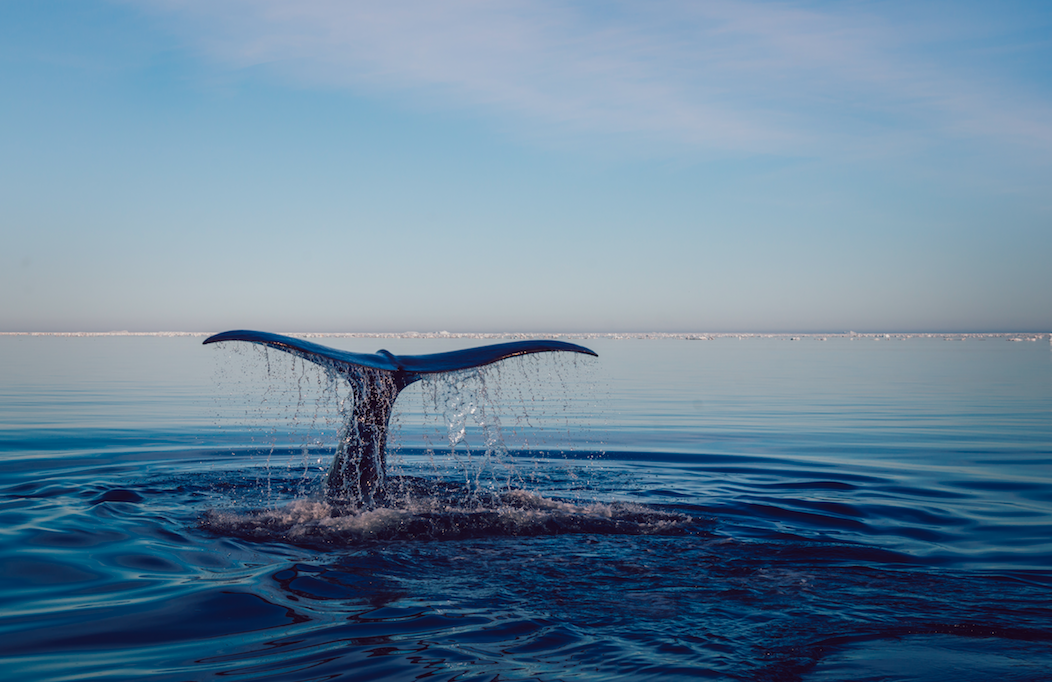Hope for Wildlife on Planet Earth
March 28, 2017
Have you ever wondered what animals think and feel? Dr. Sylvia Earle reflects on Carl Safina’s famous Ted Talk, “What are animals thinking and feeling?”
By: Dr. Sylvia Earle
As I sat aboard the 340-foot National Geographic Lindblad Orion exploration vessel steaming through one of the most biodiverse regions on the planet, the Coral Triangle, and listened to Carl Safina deliver his mesmerizing talk, “What are animals thinking and feeling?,” I felt a stirring of hope for wildlife on planet Earth. With such incision, Carl confirmed what I have observed through my decades of diving into the blue: fish have personalities! Eels have intelligence! Whales have empathy! Sharks exhibit rationality! These cognitive faculties that some humans insist make us distinct from the animal kingdom are actually shared by many of the creatures living on this blue speck in the universe. All one has to do is look and see, as Carl has so carefully done.
The first neurons showed up in jellyfish. How can we confidently say, then, that they don’t share some of the cognitive abilities that we humans have? How can we look at dolphins and killer whales, whose brains are larger than ours, and doubt that the pain of removing a mother from her child is real? Why should it be un-scientific to “anthropomorphize,” a word that itself denies the universal traits of much conscious life to any animal except we humans?

What stuck me most about Carl’s talk was his handling of my favorite animal: humans. In recognizing that we are the most extreme manifestation of the animal qualities of compassion, love and, yes, violence, he shines a light on our immense power to make a difference in this world. Armed with knowledge, the decision about how to treat our fellow animals is left to each and every one of us. My hope is that information like the kind Carl shares in this TED Talk can make a difference and change the way we think about consuming the wildlife on this planet. It certainly inspired me.
Watch Carl’s inspiring Ted Talk in the video below:








I remember years ago when there really was only two women working in and on the marine environment, Sylvia Earl and Eugenie Clark. Now we have many women choosing the ocean to work in and I sincerely believe we’re far better off today because of it. Keep up the important work you do and we might save our oceans, and the planet, in spite of what your favorite animal continues to do to it.
Thank you, Dr. Earle. YOU continue to be such a great inspiration to so many. Thank you and Mission Blue for all of your efforts to make the world a better place for all. Thank you very much!
Dear Sylvia,
Many thanks for this article. I just had a heated exchange with someone who insists that her dog, horse and rabbits have no feelings only instincts. That’s why she can easily sell them, eat them or banish them without qualms.
I, on the other hand, as a sailor crossing oceans, have had conversations with 60-foot whales looking me straight in the eye. I have frolicked with pods of dolphins performing for my joy then taking delight in my laughter and excited clapping as their reward. I have had exchanges with birds pretending to be wounded, having learned that humans are easily tricked into providing food.
I’ve also been adopted by five cats, each of which has a distinct personality. Cinquo is the bruiser. Louise is a neurotic and dependent feminine. Mini is the largest and gentlest, and most empathetic. Itzy is an independent petite kitty with a really big meow – not to be ignored. Thelma is the small feral nut case who was the original bully when they were babies but is now the one bullied. It has been a really interesting journey with these little guys.
We had an older indoor cat who sailed with us across oceans. When the kittens joined us, she was the queen of the house. They all bowed to her reign. Onyx was always thinking. When she went aboard the boat, she would immediately run around and check that her food and water bowls were out and ready, that her poopatorium was where it should be, and that her beds were in place. Only then would she settle down. And if something was not right, I heard about it. We wrote a book from her point of view (Onyx, the Cruising Kitty).
All the cats learned to communicate what they want in unique ways. Cinquo is the most clever, Louise is the most persistent, Mini and Itzy are the most insistent, and Thelma is the most furtive. When Cinquo was severely injured and could barely walk, he shared his pain with me. He let me care for him and seemed grateful. He could not have fed himself. He talks all the time now in many different sounds, not like cats who only meow. He has a very complex language which has repetitive phrases for certain things, like “I need to go outside now.” It makes me think he has accepted me as one of them. He uses cat language expecting me to learn rather then trying to use human vocal language.
We also have a neighbor’s nine donkeys on our land in the summer. I’ve learned a lot of them. They are highly social, very protective, great builders of shelters, and they take turns rolling in the dirt. They very patiently take their turn one by one. They have learned to trust me after having been abused in a former life. Now, tell me that is not thought and emotion at work.
Animals think and they feel. I know I feel things from them. It’s harder to feel things from a cow, but I don’t take any one of them for granted.
Thanks again.
Daria